Updated on:
Thu Sep 3 10:27:08 CEST 2015
Home page of EDISP
(English) DIgital
Signal Processing course
semester 2015l (summer of 2014/15 acad. year)
Schedule
The lectures are on Thursday, room 121
08:15-10:00.
There are
lab exercises, 4 hours every second week, room 022 (basement).
Labs will be on Mondays, 8-12 (N and P weeks) , in
subgroups of not more than 12 students.
For the
introductory lab (lab0) we ALL meet on
Mon, March 2nd, 9:15 in room 022.
You will be
able to register for subgroups then.
Next lab (lab1) will
be
- Mar 9th (8:15-12) for P (Parity even) subgroup
- Mar 16th (8:15-12) for N (Non-parity = parity odd) subgroup,
Note that
- In some weeks the weekdays are swapped to equalize the semester,
- In some semesters the notion of "odd" (N) and "even" (P) in that calendar may be not as straightforward as taught within a basic algebra course.
- we try to follow the official calendar, but it is not always possible ...
A printable schedule is here
Books
Book base
The course is based on selected chapters of the book:
A. V. Oppenheim, R. W. Schafer, Discrete-Time Signal Processing,
Prentice-Hall 1989 (or II ed, 1999; also acceptable previous editions
entitled Digital Signal Processing).
Other books
- Steven W. Smith, The Scientist and Engineer's Guide to Digital Signal Processing - it is a free textbook covering some of the subjects, to be found here: http://www.dspguide.com/pdfbook.htm
The book is slightly superficial, but it can be valuable - at least as a quick reference.
- Edmund Lai, Practical Digital Signal
Processing for Engineers and Technicians, Newnes (Elsevier), 2003
seems also a simple but thoroughly written book.
- Vinay K. Ingle, John G. Proakis, Digital Signal Processing using MATLAB, Thomson 2007, Bookware Companion series
Supplementary books I found in our faculty library:
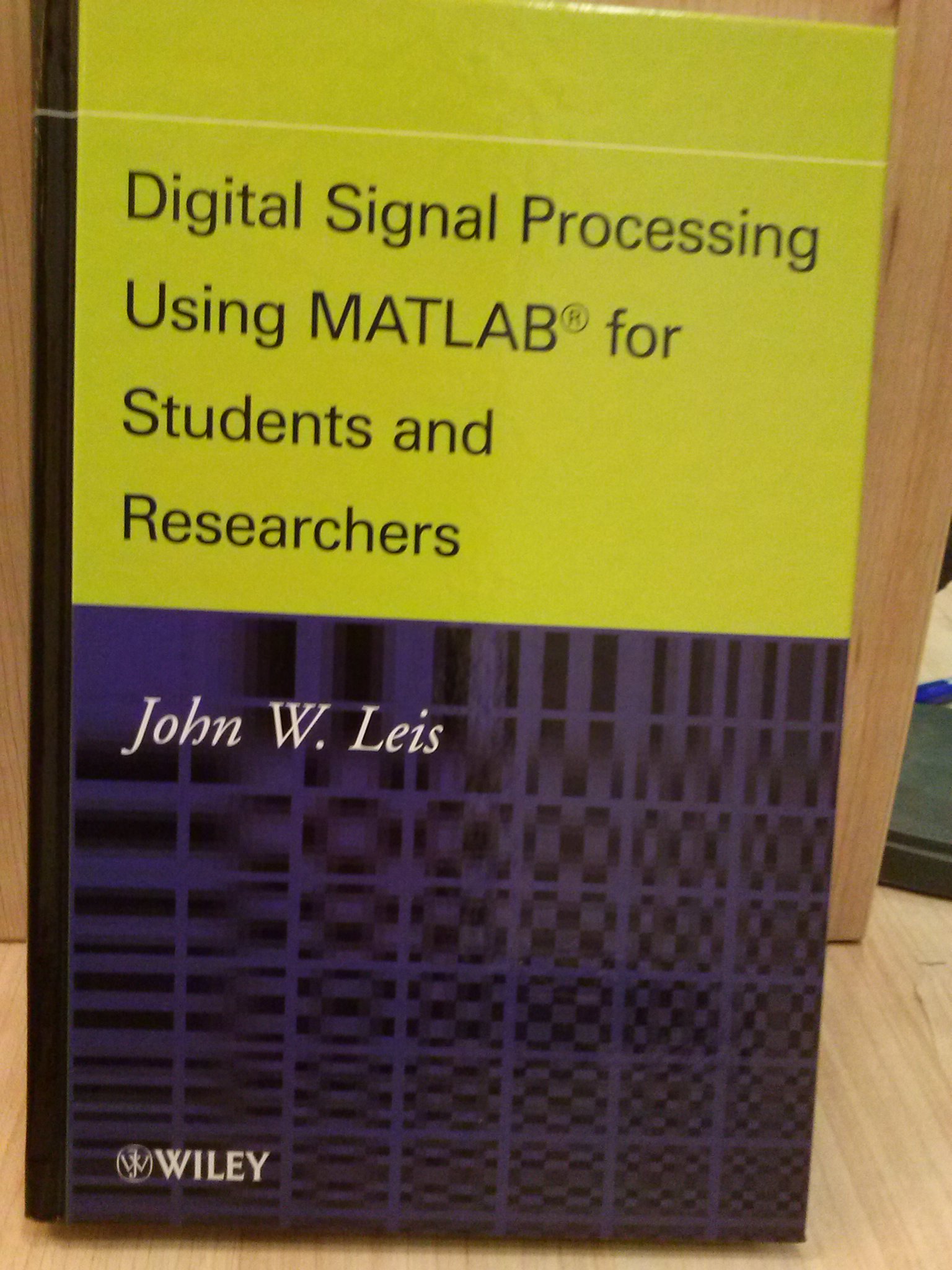
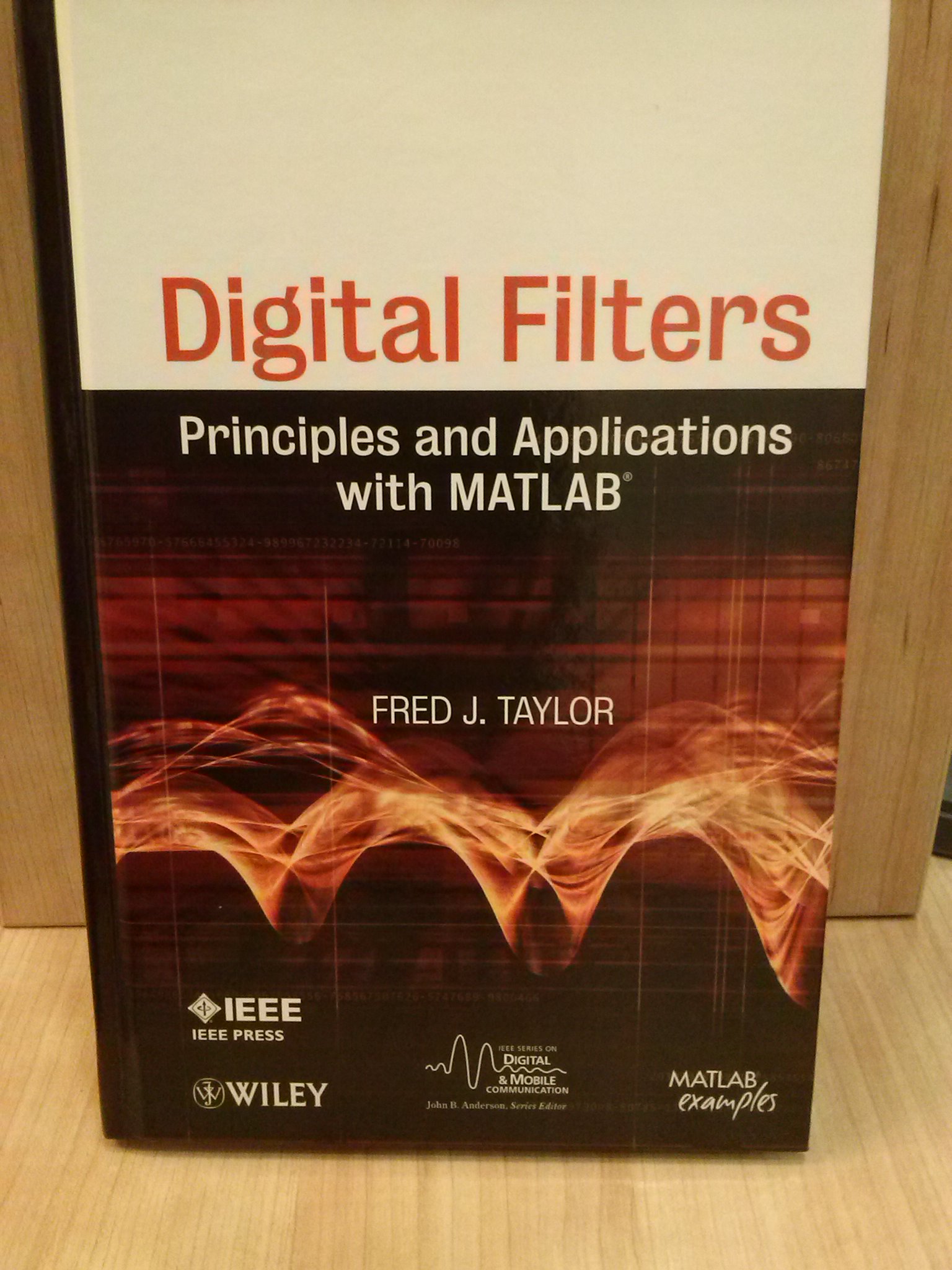
Additional books available in Poland:
- R.G. Lyons, Wprowadzenie do cyfrowego przetwarzania sygnałów
(WKiŁ 1999)
- Craig Marven, Gilian Ewers, Zarys cyfrowego przetwarzania sygnałów,
WKiŁ 1999 (simple, slightly too easy)
[en: A simple approach to digital signal processing, Wiley & Sons, 1996]
- Tomasz P. Zieliński, Od teorii do cyfrowego przetwarzania sygnałów,
WKiŁ 2002 (and next edition with slightly modified title)
Please remember:
- there are notation differences between lecture and "dspguide"
- The official book is Oppenheim & Schafer (though notation is
sometimes different too)
- no book is obligatory as it is hard to get O&S, and
other books do not cover the subject fully.
Probably the best choice is to buy a used copy of O&S.
It'll serve you for years, if you are interested in DSP. And it contains a lot of PROBLEMS to solve and learn!
Ingle/Proakis is also a good book (and you may be able to buy a new or almost new copy).
If you know LANG=PL_pl - you may prefer to buy/borrow a laboratory scriptbook for CYPS, which is in
Polish language (Cyfrowe Przetwarzanie Sygnałów, red. A Wojtkiewicz,
Wydawnictwa PW).
Supplementary material
In the course of the semester you may realize that your math knowledge is pulling you back. This is normal. DSP is a practical math usage, so you need maths. Go back to your math books and notes, and look for knowledge in the web.
Wikipedia may be too formal, but try it. Then, there is a number of course notes. I appreciated very much Paul DAwson's page when I looked for a simple example of a h(n) which convereges to zero, yet doesn't provide stability.
Course aims
In other words -- what I expect you to learn, or what I will check when it comes to grading.
A student who successfully completes the course will:
- know the mathematical fundamentals of discrete-time (DT) signal processing: DT signals, normalized frequency notion, DT systems, LTI assumption, impulse response, stability of a system
- understand the DT Fourier transforms and know how to apply them to simple DT signal analysis
- know basic window types and their usage for FT and STFT
- understand the description of a DT system with a graph, difference equation, transfer function, impulse response, frequency response
- be able to apply Z-transform in analysis of a simple DT system
- understand filtering operation and the process of DT filter design; be able to use computer tools for this task
- know the basic attributes of a Digital Signal Processor (differences w.r.t. general purpose processor, ways of speeding up the calculations, fundamentals of block diagram and programming)
- understand 2D signal processing basics: 2D convolution/filtering, 2D Fourier analysis
- be able to use a numerical computer tool (Matlab, Octave or similar) for simulating, analyzing and processing of DT signals
Lecture slides
(You may always expect hand-made corrections and inserts at the
lecture....)
Old slides below - this marker will be moved with slide update
Lecture 8:(30.11)
Lecture "Linear difference equations" - last 3 slides from newlect2.pdf
and
Z-transform newlect7.pdf
Beginning of "Filters part I" newlect8.pdf
Homework (hand-written on paper, worth up to 2 points) is due at the beginning of the lecture.
Lecture 9(07.12):
Review before test I - based on homework errors.
Filters part I:newlect8.pdf
Lecture 10(14.12):
14-15: one hour test I, 10pts worth: bring YOUR OWN notes (handwritten on paper or on printed
lecture slides). No books, no photocopies of other person
notes. Example test:test1_078a.pdf
15-16: Filters part
II:newlect9.pdf
Filters part
IIInewlect10.pdf
Lecture 11(21.12): Digital signal processors:
lect12_dsp.pdf(and OHP foils to be
seen at the lecture)
Homework:(homew2_2008plus.pdf)
given today
29.12: Merry Christmas and Happy New Year
Lecture 12 (4.1): 2D signal
processing lect13.pdf
Homework due today
Lecture 13 (11.1): test II(
example test here) and signal processing
for data compression
Lecture 14: (18.1) Random DT
signals
and advanced techniques
plus remarks on calculating convolution by FFT (last slides
of newlect5.pdf
)
Lecture 15: (25.1) Review. Please prepare questions: try to solve
example final tests (below), review lecture slides. You may mail me
some questions earlier.
Exam1: (31.01) 8-11 room 202
pen, pencil, calculator and your own notes
plus lecture slides.
Copies of solutions for homeworks/tests/exams
are NOT allowed.
The exam covers ALL the course matter. There are "Problems" (longer)
and "Questions" (shorter), for total of 90 minutes.
If you fail you are still entitled to take Ex2.
Students who earned the "shortpath" grade may take the ex1 or ex2
without any risk - better grade counts
Just after Exam1 there will be a possibility to re-take test1 or test2.
Please mail me to declare if you want it.
Exam2: (04.02) 14-17 room 447 room 170
Better grade counts.
Note: in a plan there was 07.02 for ex2. If you cannot attend the new date, contact me and we will arrange it somehow.
Examples of tests
Use them for study. Learn methods, not solutions.
Exam tests 2007
One test. Another test.
There is no guarantee that the current test be identical ;-). It
will be similar (the lecture was similar), but I might also put
more focus on different subjects. The only base is the lecture content
(live one, not only the published slides ....).
The main rule: exam covers the whole course content (sampled),
including the T1(H1)+T2(H2) area and also the lectures after the
H2.
Exam tests 2009 w/solution discussion
Exam version A
Exam version B
- In both cases the signal was sampled correctly
(fs>2f)
- To calculate N0 it was enough to count no. of
samples in period (or divide fs over f). Answer was
10(A) or 6(B). For N0 samples in period,
θ0 was equal to 2π/N0.
- K-size DFT will have K discrete samples over <-π, +π)
(we include -π, and exclude +π , but
due to periodicity of spectrum it is only a
convention)
for a cosine, only two samples are non-zero: at k such that
θk=±θsignal. Form the
definition of θk you will see that this is
for k=±4 (this is the result of taking K=4N0).
- You may label frequency axis with
k=-K/2,....-1,0,1,...K/2 or with its periodic equivalent
K-K/2,....K-1,0,1,...K/2
to label with θ just use
the expression for θk.
-
- H(z)=Y(z)/X(z) is easily obtainable from the time equation. It
was
0.2(1+z-1)/(1-0.8z-1) [A]
-0.2(1-z-1)/(1+0.8z-1) [B]
- Zeros are roots of numerator: -1 [A] or +1 [B]
Poles are roots of denominator: +0.8 [A] or -0.8 [B]. They are
inside unit circle, so the system is stable (but I didn't
ask...)
- Example graph:
 - please
find a_0, b_0, b_1 by yourselves. If you are smart, you may save
one multiplication by 0.2 (this is left as exercise to you).
- please
find a_0, b_0, b_1 by yourselves. If you are smart, you may save
one multiplication by 0.2 (this is left as exercise to you).
- For x(n)= shifted delta, (a limited energy signal)
you may take the impulse response
and shift it appropriately. To find h(n) it is easiest to split
H(z) into two fractions: (shown for [A], for [B] change some signs)
0.2(1/(1-0.8z-1)+z-1/(1-0.8z-1))
and lookup the inv.Z of 1/(1-0.8z-1) in the
table. The final result is a sum of two identical exponentials
shifted by 1 in time. Then, you shift h(n) to proper position....
- For x(n) = 1-(-1)n (a periodic signal) we see a DC
component and a periodic component exp(jπn) with frequency of
π. We find numerical values of
H(0)=(2 or 0) and H(π)= (0 or -2) by substituting exp(0) and exp(π) for z, and
finally
y(n)=H(0)-H(π)·(-1)n
- The response was symmetrical around its midpoint (n= 2 or
4). Thus, it was a repsonse of a zero-phase filter delayed by 2 or
4.
- phase is linear φ=-(2 or 4)θ
delay is constant and equal to (2 or 4)
- The response of filter is a rectangle modulated by
exp(jπn). Thus, the characteristics is a
sin(θL/2)/sin(θ), shifted to π. You may find the
mainlobe width, you may plot exactly zeros of A(θ) etc.
- Time resolution is proportional to time duration of window,
frequency resolution - to mainlobe width (which is prop. to 1/K
....).
Rectangular window has narrowest mainlobe possible, but high
sidelobes; so it is good for resolving signals close in frequency,
but without large difference in amplitudes.
Any other window will have wider mainlobe (so poorer resolution in
f).
-
There was nonlinearity introcuced by product of two samples (linear is
multiplication by a constant only).
Saying "causal=yes because of BIBO" was not enough; "because FIR" was
enough; if you call BIBO, you have to prove it by finding relation
between bound of input and output.
- LP filter with passband of π/4 (see the "lecture 17").
- Many shorter is better: by averaging we reduce the variance
of estimate. (variance is huuuuuge with single FFT)
- β (some call it α) controls the shape of window -
effectively the sidelobes level (high β - low sidelobes). Is
high β better? yes, if you are concerned with sidelobe level;
but remember that you pay with wider mainlobe (There Ain't No
Such Thing As A Free Lunch)
- Inv FT is calculated by summation when the spectrum is
discrete ([B], periodic signal) and by integration when the
spectrum is continuous ([A], limited energy signal).
- 3 buses are for opcode, data1 (signal), data2
(coefficient).
Any instruction with dual move uses all three,
e.g MAC instruction needs 2 data, so it is nice that we can load
data in the same cycle
in 56002 it can be coded as:
mac a,b x:(r0+),x0 y:(r4+),y0
- Trivial
- def: order of n^2, FFT: order of n log2(n)
- y(n) length is, maximally, (length of h(n))+(length of
x(n))-1. K=M+N-1. Here, we were asked to find M knowing K and
N. Answer is, as you may guess, M=K-(N-1)
- The clue is in word "maximally". It may happen that for
certain signal (e.g in the stopband....) the y(n) is shorter.....
T1/T2 test examples
Please note that the solutions are NOT a model ones to copy and paste. In some cases a "full score" student solution to the test needs a bit of explanations, and in many cases my solution is too large - I wanted to show different possibilities or broaden an example.
To summarize - don't learn by heart. Learn by brain. Try to solve the missing versions of tests.
Test1 2010/11 ver.A problems
Test1 2010/11 ver.B problems
Test1 ver.B solutions
Test1 ver.A solutions
Test2 (ver.A) and solutions
Test2 (ver.B) (do it yourself!)
Also, think first, act later.
- If you see a system - what type of system it is? LTI? What consequences arise from this?
- If you see a signal - is it limited energy? periodic?
- Which tool to use for LE? Which one for periodic? Which FT definition is appropriate?
- Is the plot you see in time or in frequency?
- Is the plot you have to sketch - in time or freq domain?
- Will the sketch requested be continuous or discrete? periodic? Will it have some symmetry? Is the function real-valued or complex? Maybe we are plotting abs()?
- maybe the function in freq can be expressed as "real times exp(j n0 theta)" because in time it is "symmetrical but shifted by n0"? How much is n0? (If in freq domain - shifted by θ0 - how much is this? )
- Signal is causal? Don't forget u(n) then.
- See -1? Try exp(j pi) instead. See exp(j pi)? Try (-1)....
When solving at home, you may use matlab or octave to do calculations like (1-j)/(1+j) (or to verify your calculations). You may also use these tools to show plots. Then try to understand why it is like you see - no Matlab at the exam, please :-).
Test1 2013/14 ver.A problems
- Max score was 13, I assume 10 is OK, and +3 is a bonus.
- Typical errors as I commented by email on your homework still show up.
- Hints:
- Impulse response is useful if system is LTI (Linear AND Time-Invariant -- you must verify both!)
Stability is verified by finding M such that By=M Bx; one way to find M is to calculate ∑ |h(n)|. Remember that h(n) → 0 is NOT enough (look here for an example)
- Remember that fn or N are UNITLESS (don't use units like Hertz or seconds) -- they are ratios of f/fs or just number of samples
Common error -- forgetting that there is N0 and N, and N must be an integer (N=19 [A] or 9 [B])
- FFT complexity calculation was simple (answer: [A] 48 ms, [B] 2 ms)
- DTFT was either 2cosθ or -2jsinθ. The task was to plot AMPLITUDE |X(θ)|, then to recall that DFT-8 will be just 8 samples of X(θ)
- Formula N+L-1 is good as a maximum length of convolution if we don't know exactly signals. In this case h(n) was a short rectangular pulse, x(n) -- two well-separated deltas, so in the output we got just two copies of h(n). ([A]:10, [B]:14, however I gave 1/2 score for correct application of L+N-1)
Put this code in Octave or Matlab:
x=zeros(1,100);
n=[1:100]-10;
x(n==0)=1;
x(n==40)=1;
figure(1);
stem(n,x); title('x(n)');axis([-20 100 0 1.2]);
h=ones(1,5);
figure(2);
stem(0:4,h); title('h(n)');axis([-20 100 0 1.2]);
figure(3)
y=conv(x,h);
stem([1:length(y)]-10,conv(x,h));axis([-20 100 0 1.2]);
- xs(n) was a SUM of x(n) with manipulated x(n):
1. shifted by N → X(k)⋅ exp(-j N θ_k) ; happily this factor is always =1;
2. inverted in time → X(-k) (or X*(k) for real signals)
Some students applied linearity idea in the argument of X(k) (WRONG!!!! Do it only on X, not on k)
Test 2 (2013/14) solutions sketch
Computer plots:
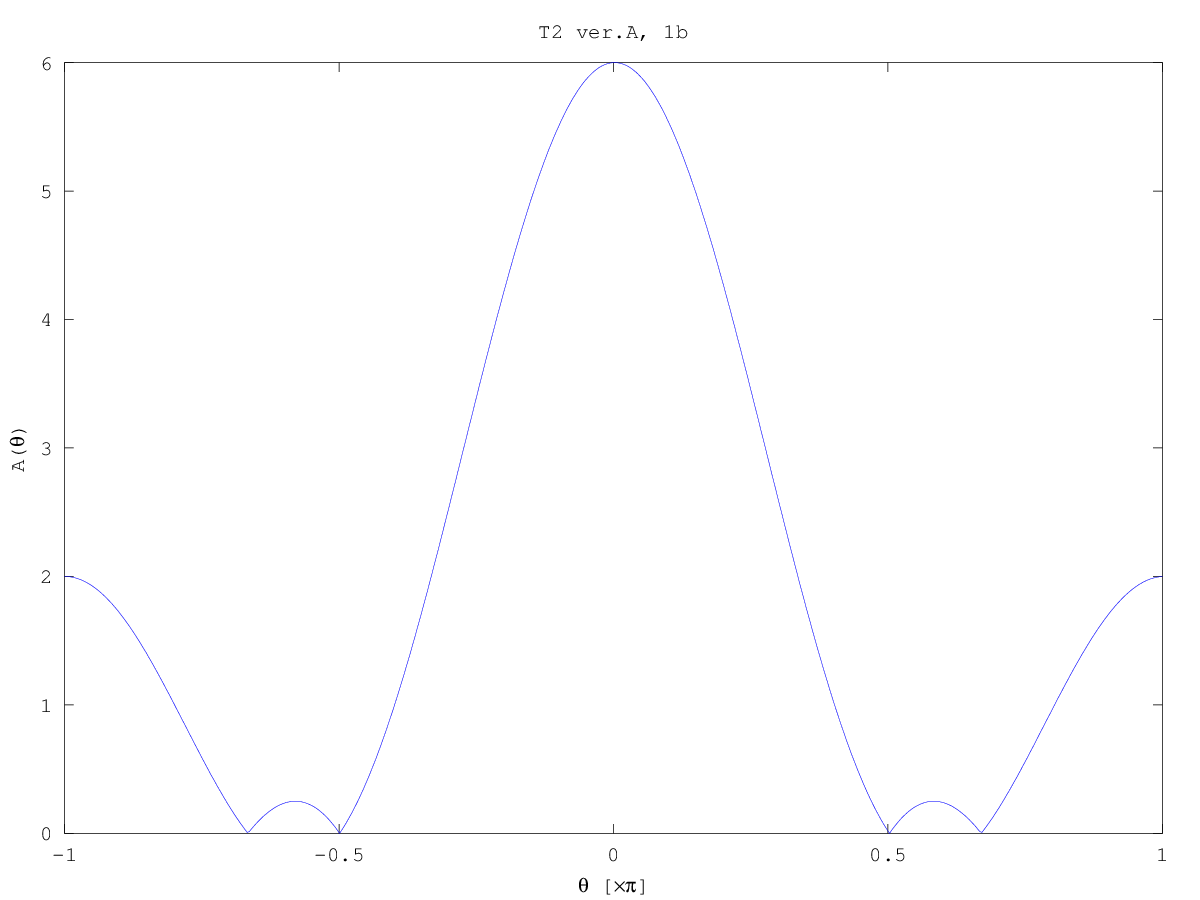
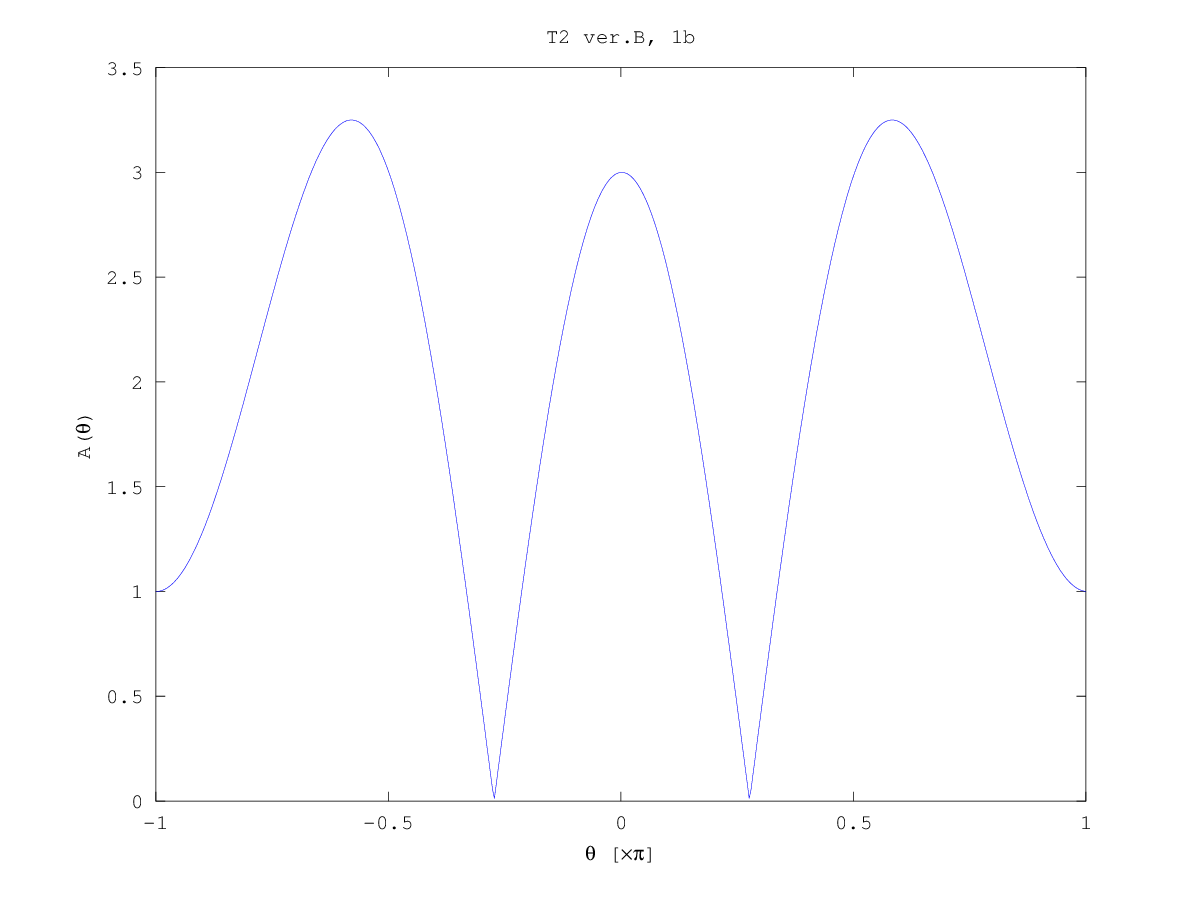
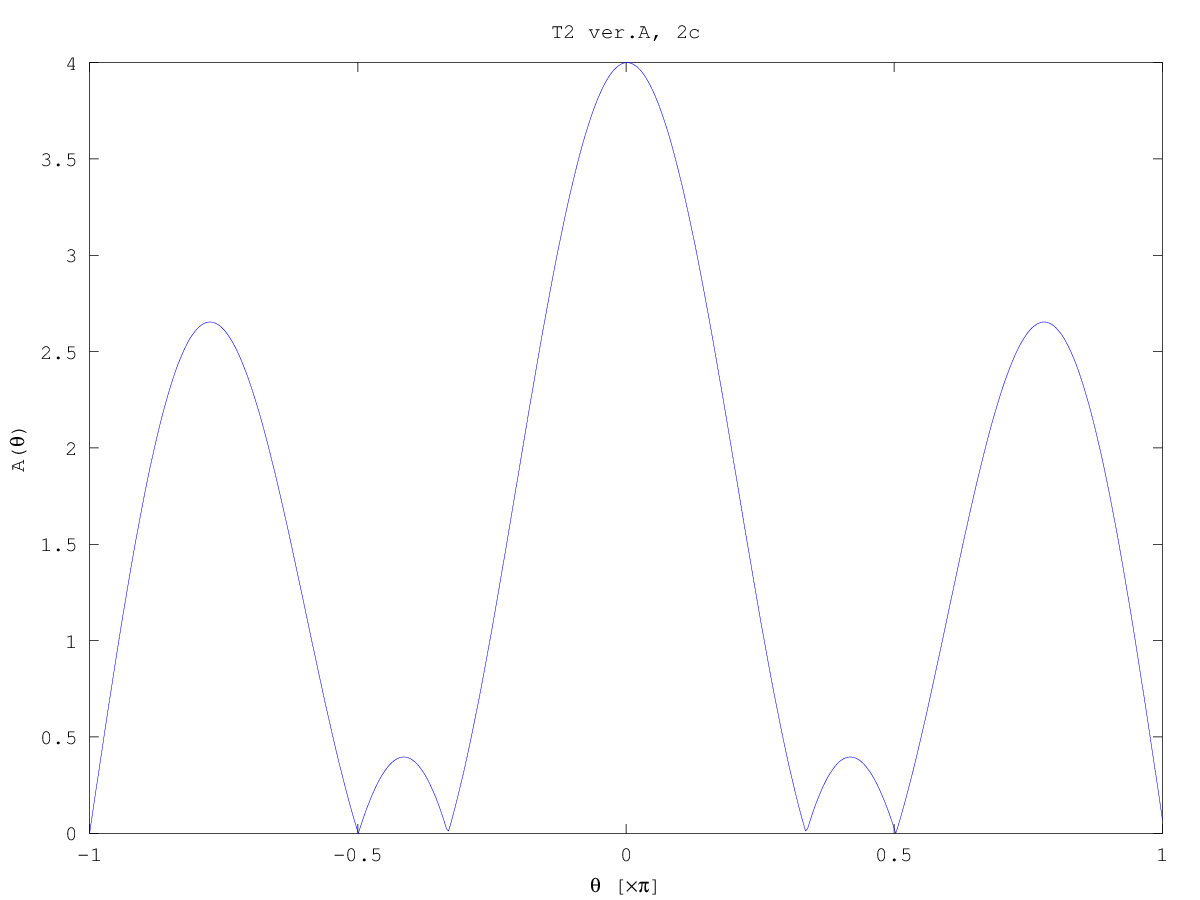
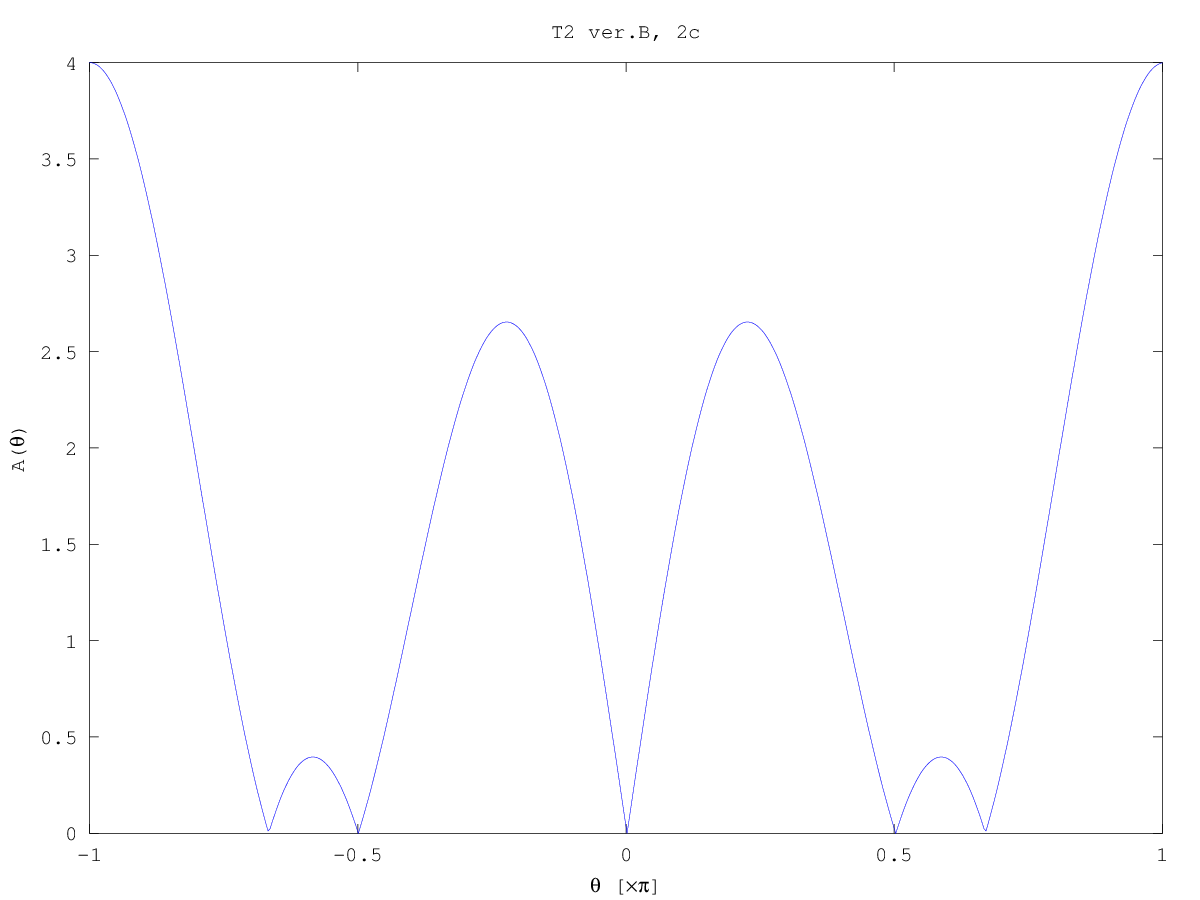
Lab info: example lab exercises
The labs will be taught by
Disclaimer:
These are called "examples" to underline the fact that they are not
official. Some of them need review....
Openly speaking, they are exercise sets current at the
time of posting. I reserve the right to make some important
modifications before the actual lab, to give different sets to
different groups etc. (and I usually DO review the text before giving
it....).
Lab exercises:
Students do not need to print these
scripts -- the official lab instructions will be available at the lab.
- Lab 0: Introduction, Matlab
- Lab 1: Signals, systems, frequency
- Simple MATLAB usage: make a vector, plot x - y plot with proper
data on axes, make a simple m-function.
- DT signal as a sampled CT signal: plot sample values of a sin()
with a frequency of 1 kHz, sampled with 10 kHz (etc). Put x-axis
values as sample index, CT instant, ....
- Normalized frequency concept (e.g. What is the θ value in
the above example?)
Prepare to the lab1
Take a look at
lab exercises (and examples of entry test): nwlab1.pdf and:
- try to do the example entry test
- go carefully through lab exercises and
visit http://www.mathworks.com/help/matlab/
to find help/explanations for commands that are used in the instructions (e.g.
cumsum(), ":" operator for array subscripting [search Mathworks for "colon"], zeros(), ones(), stem() )
Optional:
visit http://www.gnu.org/software/octave/
and install Octave - then you will be able to do the simulation
experiments at home (100% legally); you may also learn commands using
e.g. "help colon" from the octave prompt instead of mathworks
site. [note: "getdata()" and some special scripts will not work under
Octave; "getdata()" works only for the A/D card in lab, local scripts are present only in lab computers].
- Lab 2: Spectral analysis
- DFT properties, effect of limited observation time (windowing)
- Spectrum of a rectangular impulse
Lab exercises: nwlab2.pdf
- Lab 3: Instantaneous spectrum or STFT
Lab exercises: lab03_2015l.pdf
Example entry test:
- Calculate (and sketch) the magnitude Fourier spectrum of a rectangular window with
given length L. Find the number of \{zeroes|sidelobes\} and mainlobe width .
- Sketch the DFT of a signal consisting of exactly 4 periods of
a cosine, (or: 2 periods of cosine, zero-padded to the length of 4 periods).
- Calculate the STFT (inst. spectrum) of a u(n)cos(0.2π n) for a
rectangular window of given length positioned at n=0, n=9, .... (choose length>10)
- We sample a signal with f_s=100 kHz and use boxcar window with length L=500 to calculate STFT. What is the approximate resolution of STFT in \{time|frequency\}? (a variant: we want to resolve two signals spaced by 1 kHz -- what length do we need?)
- Lab 4: Filter design
Lab exercises: lab4_2015l.pdf
Example entry test below. Please DO these exercises.
- Location of two poles and two zeros is given (here you may invent any decent location of zeros and poles). Calculate filter
frequency response (magnitude response).
Hints:
- start from easy configurations, e.g.
- real zeros at +1 and -1,
- pair of zeros somewhere on the unit circle, double pole at z=0;
- pair of poles at a given angle and radius a bit smaller than unit, double zero at z=0
- (this is not from EDISP lecture but from MATH lecture!) First recall
which root configurations are possible for a real-coefficient
polynomial, then recall stability criterion for DT filter (poles inside unit circle) - don't use silly configurations
- A filter structure is given. Find all its properties: h(n),
H(z), poles/zeros, magnitude response..... (for own exercises
- use all the lecture examples first; read the lect_lti_z.pdf and lect_filt.pdf for a reference)
- A filter is characterized by H(z) (given). Find the output
y(n) for
x(n)=sin(θ1n)+cos(θ2n)+1 (or
some other combination of different signals)
Hints:
- recall that convolution with a given h(n) is a linear operator -- decompose x(n) into separate easy components
- Substitute exp(jθ) into z
- find amplitudes for interesting θ values
- find phases for these θ values
- Explain, step-by-step, the design process of FIR filter by windowing
the ideal filter characteristics. Explain role of window (etc.).
- Lab 5: Signal processors
Lab exercises: lab_emubox.pdf (the title says "lab 6", just ignore it)
Example entry test problems:
- Describe differences between Von Neumann and Harvard computer architectures. Name some tasks which are better fitted for each of them.
- Describe differences between a typical Digital Signal Processor and a typical {microcontroller|| general purpose processor - e.g. i386 || GPU}
- Why does a DSP usually have {two or three memory buses || two address generators || bit-reversal addressing mode || hardware "for" loop implementation}? (Give an example of an instruction using this feature).
- A system has been tested by applying a unit impulse δ[n] at the input and recording the output sequence y[n]. Finally, an FFT has been computed from the y[n], and absolute value plotted.
- What is the function that is approximated by what we see on the plot?
- Please describe assumptions that must be made so that it is a good approximation!
(hint:
- what is y[n] in this case?
- what will be the Fourier transform of this?
- When does h[n] completely describe a system?
- how many samples of y[n] do we need?
- we take FFT instead of FT - how this changes the result? What to do to minimize (visual) difference?
)
Old instructions below - this marker will be moved with updates
Past things archive (Attic)
dr inż. Jacek Misiurewicz
room 447 (GE)
Office hours: Tue 16:30-17:00 (or by e-mail appointment)
Institute of Electronic Systems

email:jmisiure@elka.pw.edu.pl
This page is "Continuously Expanding".///////////////////////





 - please
find a_0, b_0, b_1 by yourselves. If you are smart, you may save
one multiplication by 0.2 (this is left as exercise to you).
- please
find a_0, b_0, b_1 by yourselves. If you are smart, you may save
one multiplication by 0.2 (this is left as exercise to you).




